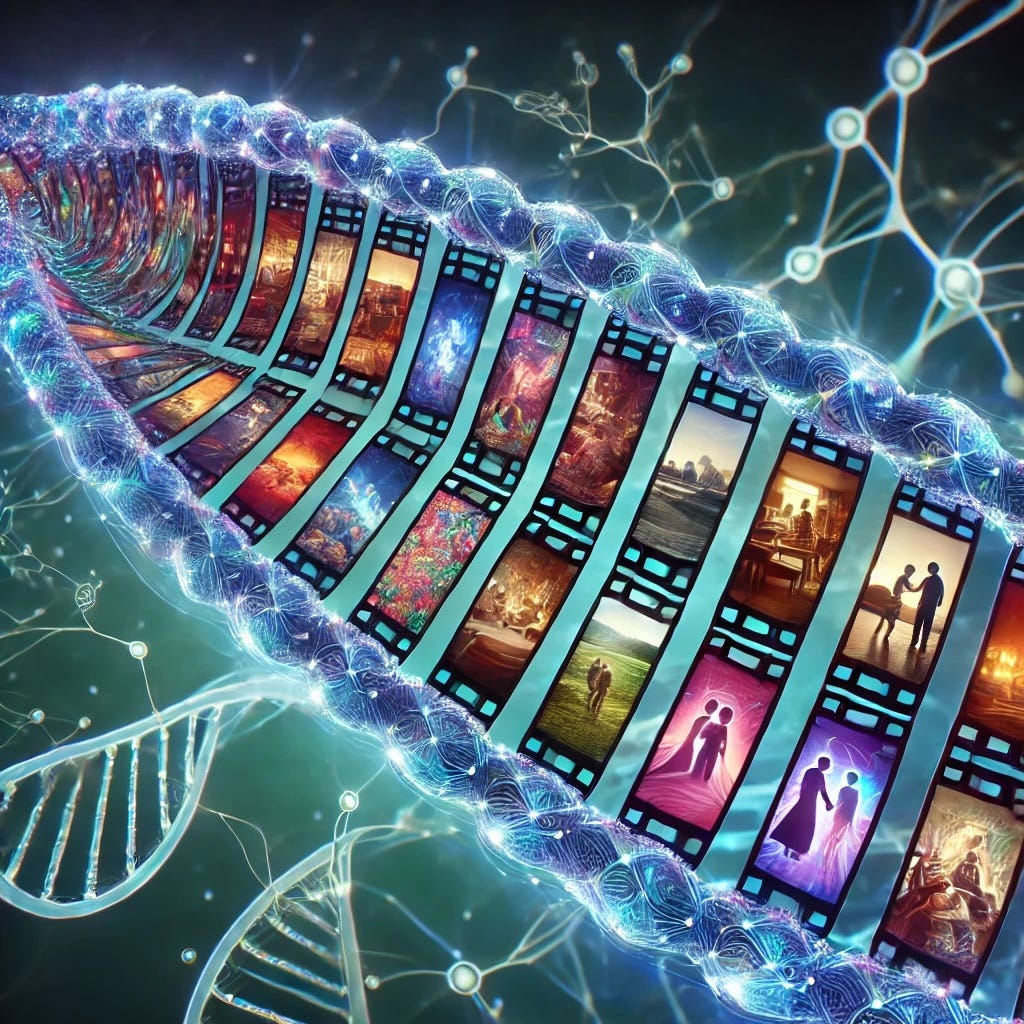"Event Scripts" and What it Means for Travel
Our world is a continuous sequence of narrative memory constructs
When it comes to understanding how the brain works, neuroscientists are starting to peel back the layers of perception, memory, and where in the brain these "event scripts" live. What does this have to do with travel? Well, everything.
“Narrative is fundamental to the way that people remember their day, their week and their life,” said Janice Chen, a neuroscientist at Johns Hopkins University. When an event happens, according to neuroscientist Chris Baldassano, it’s “like a coloring book page that’s not colored in yet, but a lot of the lines are already there. When an event is happening, you are filling in the particular details.”
There’s a scaffolding of sorts that our neurons have built so that we can make sense of the events in our world more easily. For example, every restaurant script contains more or less the same sequence of events: entering, being seated, ordering food, the arrival of the meal(s), eating / drinking, paying the bill, and then exiting:
Baldassano’s work, published in The Journal of Neuroscience in 2018, showed that there are two critical steps to constructing memories. As we go about our day, we record the new experiences in pieces of varying size and complexity, from simple perceptions to stunning plot twists. Meanwhile, our brains access templates (neuronal scaffolds) for these new events based on knowledge of similar ones, and place the pieces of the evolving memory in that context.
Memories, it turns out, are more like paint-by-number than rendered from scratch on a blank canvas.
And sometimes more than one script runs at once.
To test how we frame an event script’s unfolding when multiple scripts are involved, Baldassano’s team recorded short audio stories in which a social script (a breakup, proposal, business deal etc) played out over a location script (a restaurant, airport, grocery store etc). Then he gave his listeners roles to play as they listened. For a story about a marriage proposal in a restaurant, some listeners were asked to pretend they were restaurant critics, while others were cast as wedding planners.
Which frame a listener took influenced the details that person remembered from the story. Echoes of both scripts were active in all listeners, but the dominant script associated with the listener’s role aligned with significant events in the brain’s memory construction. For instance, from a wedding planner’s perspective, ordering food is not as interesting as witnessing a restaurant customer asking for another’s hand in marriage.
The implications for travel (or for day to day life) is to recognize that the way we experience and remember events arises largely from our mental states (or frames), as opposed to properties of the events themselves. Using the coloring book metaphor, we construct the narratives based on black and white neuronal scaffoldings from our past, filling them in with color and nuance and most importantly — meaning. The actual (objective) event itself, to a large extent, doesn’t exist. The scaffolding is there — restaurant, wedding planner, restaurant critic etc. But the final, stored memory is entirely dependent on the context-dependent construction.
Another implication of these new science revelations is that — since we’re in the memory construction business all of the time — we don’t really need to travel in order to have meaningful events / experiences. To fill in the color of a restaurant event’s scaffolding you can visit our own neighborhood, try a new restaurant (to you, not the restaurant owners), and ideally savor unique flavors that will result in lovely long-term memories.
There are even dining experiences held in complete darkness, also known as "dark dining" restaurants, that focus on sensory exploration. Yet another way to lay down unique, non-visual memories.
When we travel we are essentially forcing our black and while memory scaffolds to re-configure themselves. Is it still a restaurant if the seats are small plastic stools? Or is that a food stall? We are eager and willing to paint in the colors that don’t adhere to “the way things are” back home, experiencing new patterns or variations. That’s the sheer beauty of leaving our comfort zone behind.
It’s as if we desire that our brains rewire themselves. Our childhood glee at discovering something new in the well-trampled backyard becomes re-ignited as we gaze at a dreamy sunset off of Italy’s Amalfi coast, spin our heads at the 360 degree food riot at the Myeongdong night market in Seoul, or soak up the serenity of a 24 hour day of silence in Bali during Nyepi.
So do we really need to travel? When I’m traveling in a foreign country it is far easier to be made aware that the event scripts are not like the ones back home. Does that mean I have more colorful scripts than someone who has not traveled abroad? No. Since memory is an always-on evolving narrative that we actively construct, the non-traveler still colors in event scripts as much as any globe trotter. However, there may be a limit to the variety, unless the stay-at-home individual is intentionally creative.
Based on the new science behind event scripts, you can define travel as a brand new set of color markers for your coloring book. (And the coloring book itself is something you created — and maybe partly inherited — as you gradually grew to become a member of society.)
Later,
Neill




Great to read your ideas again dear Neill!!